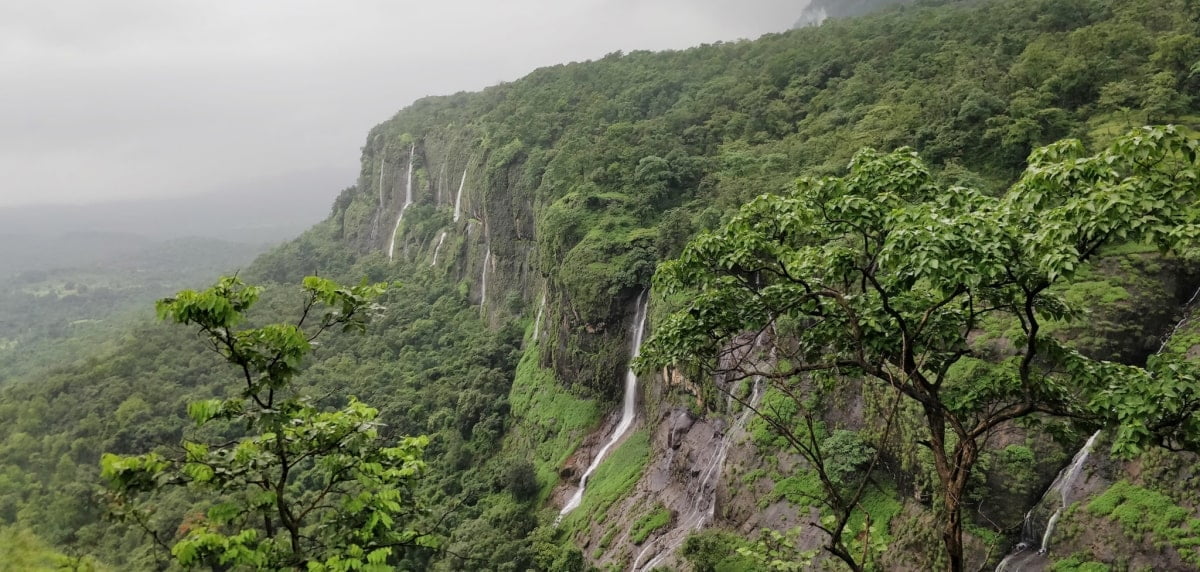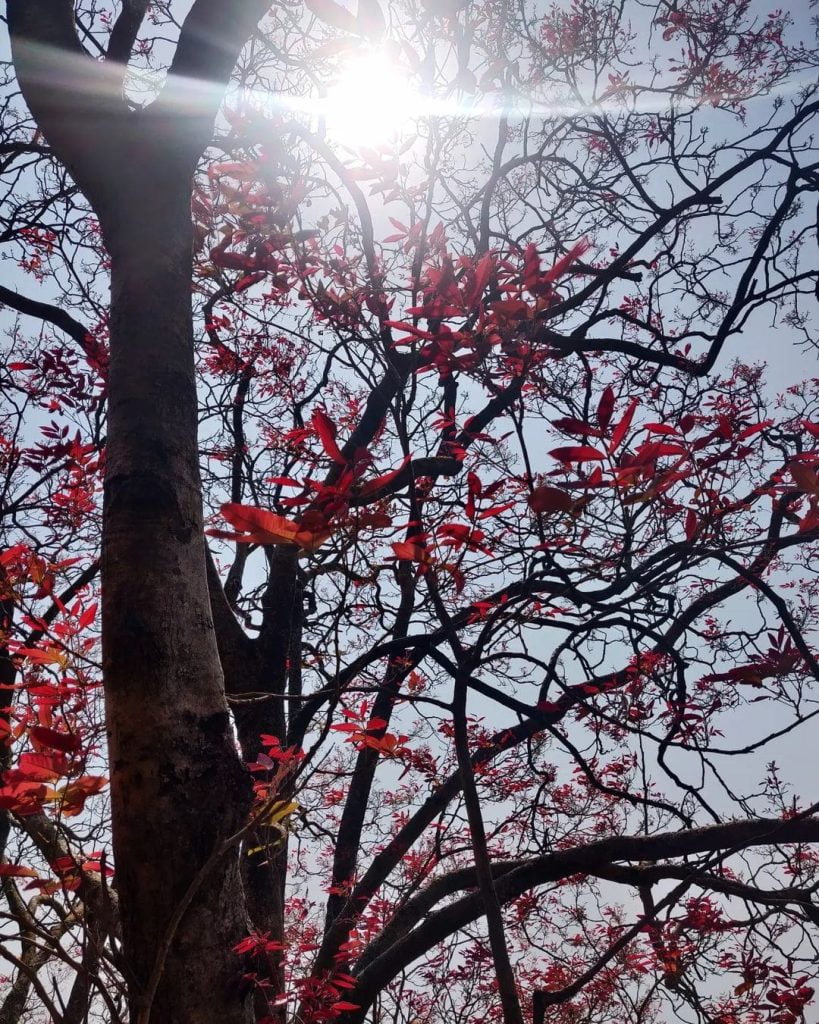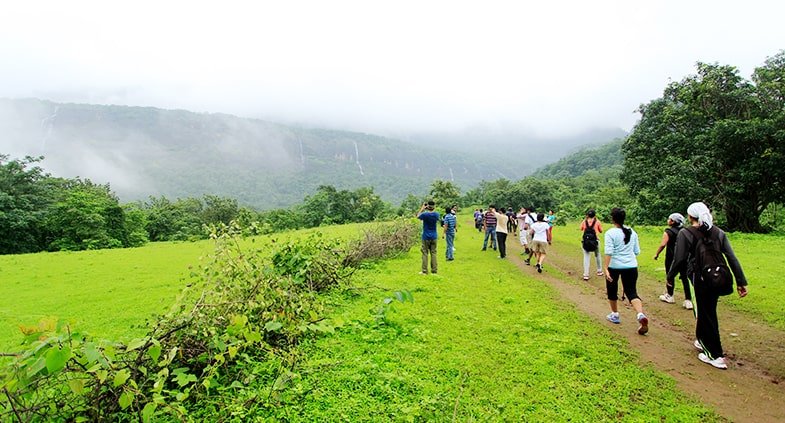Brief About Bhimashankar Trek
As a nature lover, the Bhimashankar trek offers an excellent opportunity to explore the Bhimashankar Wildlife Sanctuary. The trek offers a thrilling adventure, including stream crossings, rock climbing, and ladders that take you through thick forests, pristine meadows, waterfalls, and rocky patches. The trek offers scenic views and is doable throughout the year, with monsoon being the best time. Beginners can take the Ganesh Ghat route, which is easier, while experienced trekkers can take the Shidi Ghat route.

The trek offers the opportunity to spot a variety of wildlife, including birds, langurs, and spotted deer, and if lucky, you may also spot the Malabar Giant Squirrel, known as the Shekar. For photographers, the trek offers a chance to capture some of the best wildlife photographs, as the sanctuary is home to the Giant Indian Squirrels. The trek also takes you to a famous Jyotirlinga temple located amidst the forest. So, grab your trekking shoes and camera and embark on an exciting expedition.
Key details of the Bhimashankar Trek:
- Ideal Number of Days for the Visit: 2 days
- Trek Distance: 7-8 km
- Trek Altitude Range: 3500 feet
- Nearest Railway Station: Neral Station (241 km)
- Nearest Airport: Chhatrapati Shivaji Maharaj Airport




Table of Contents
Best Places to Visit & Explore at Bhimashankar Trek
If you are looking for an adventure in the Western Ghats, a two-day trek to Bhimashankar will allow you to explore some of the most amazing places in the region.
- Start your journey by visiting Bhimashankar Jyotirlinga, a centuries-old shrine dedicated to Lord Shiva, where you can offer your prayers.
- Next, explore the Bhimashankar wildlife sanctuary, home to unique flora and fauna that can be explored on a jungle safari. You can also visit Hanuman lake, an ideal spot for camping and birdwatching.
In addition to the above, you can visit the Nagphani Peak, Rajmachi fort trek, Gupt Bhimashankar temple, Bombay Point, Ahupe Waterfalls, Kondhawal waterfall, and Bhakadevi.
- Nagphani Peak is a 2.5 km trek to the peak with breathtaking views of Lonavala and Khandala valleys, while the Rajmachi fort trek is a popular trek for experienced hikers.
- Gupt Bhimashankar temple is accessible through a walk in the jungle, and visitors can see the Shivling behind the waterfall.
- For a beautiful sunset, head to Bombay Point, and for a stunning waterfall, visit Kondhawal waterfall.
- Lastly, Bhakadevi is a large water body surrounded by lush green mountains that is perfect for relaxation.
Overall, Bhimashankar offers a wide variety of activities for travelers seeking adventure, spiritual experiences, and natural beauty. With its rich biodiversity, lush green forests, and stunning views, Bhimashankar is an ideal destination for nature lovers and adventurers alike.

What is the best time to visit Bhimashankar Trek?
The best time to visit is during the monsoon season from July to September, as the weather is pleasant, waterfalls are rejuvenated, and faunas can be spotted.
Spring and winter are also great seasons for a trek. Spring, from February to March, offers a magical time to explore the forests with temperatures ranging from 15ᵒC to 31ᵒC. Winter, from November to February, is perfect for recreational activities, although trekkers may want to carry jackets or woollens as the temperature can drop to 11/12ᵒC at night.
However, it’s not recommended to visit between June and September due to heavy rainfall, making the climb slippery and dangerous. Summertime trek is also not recommended due to high humidity, which can be extremely exhausting. Nonetheless, daredevils can head to the trails if they are ready for the rains or the hot and humid season.
How to reach the starting point of the trek?
Khandas village is the starting point for the Bhimashankar trek and can be reached through Karjat. To reach Karjat/Neral from Mumbai, you can board a local train or outstation train to Karjat or Pune and alight at Neral or Karjat, which takes about 2 hours from Dadar railway station. If you’re traveling from Pune, board a Mumbai bound train and alight at Neral or Karjat, which takes about 2 hours.
To reach Bhimashankar from Neral, take a sharing Tum-Tum/Van to Kashele, which costs 20 Rs per seat. From Kashele, you can either wait for the bus to Khandas base village or board another sharing Tum-Tum, which costs 30-40 Rs per seat. Private jeeps/autos are easily available from Neral/Karjat to Kashele/Khandas base village, and you can bargain for a decent deal. It costs Rs 500 to travel from Neral to Khandas base village.
Availability of accommodations and food near the trek
Food:
Travellers to Bhimashankar have several options for food during their trek. They can find hotels and restaurants set up by villagers at Khandas village and small stalls near the Bhimashankar temple. However, it is advisable to carry your own food. During the trek, travelers can also find authentic local food like Jhunka Bhakhri and Kande Pohe at makeshift stops set up by the locals.
In Bhimashankar village, there are no restaurants, but travelers can head to nearby hotels for the local cuisine. There are also some delicious local snacks available at the point where the two trekking trails meet, including Misal Paav, Roasted Corn, Fruits, Groundnuts, Batata Wada, Idli Sambar, Pakoras, Lemonade, and Ginger Tea. Some restaurants also serve Maharashtrian Thalis with traditionally cooked vegetables, curries, flatbreads, and salad.
Accommodation:
Night stays can be arranged at Khandas at the start of the trek. Bhimashankar temple has a few lodges and hotels, and local villagers can also help with accommodation at the village and the top. Additionally, there are options for hotels, guest houses, and lodges in all budgets in Bhimashankar.
You can check for good hotel deals here.
The Difficulty level of the Bhimashankar Trek
The Bhimashankar trek is a moderate-difficult trek with steep slopes and rocky terrain. There are two routes available, Ganesh Ghat and Shidi Ghat, with the latter being more difficult. The trek is filled with stunning artifacts by nature, and the Ganesh Ghat route is relatively easier, but still demands caution and energy. The most difficult part of the trek is braved while passing through steep pathways.
Preparation required for the Bhimashankar Trek
The Bhimashankar trek is suitable for those with good stamina, endurance, and fitness levels, and not necessarily for expert trekkers. Light workout sessions or cardio can be done at least two weeks before the trek to help prepare the body. It is also important to keep the backpack light. Network connection is available at the base village but as you climb up, mobile connectivity will fluctuate due to the remote location and high altitude, with poor connectivity and scarce availability of telecom towers.



